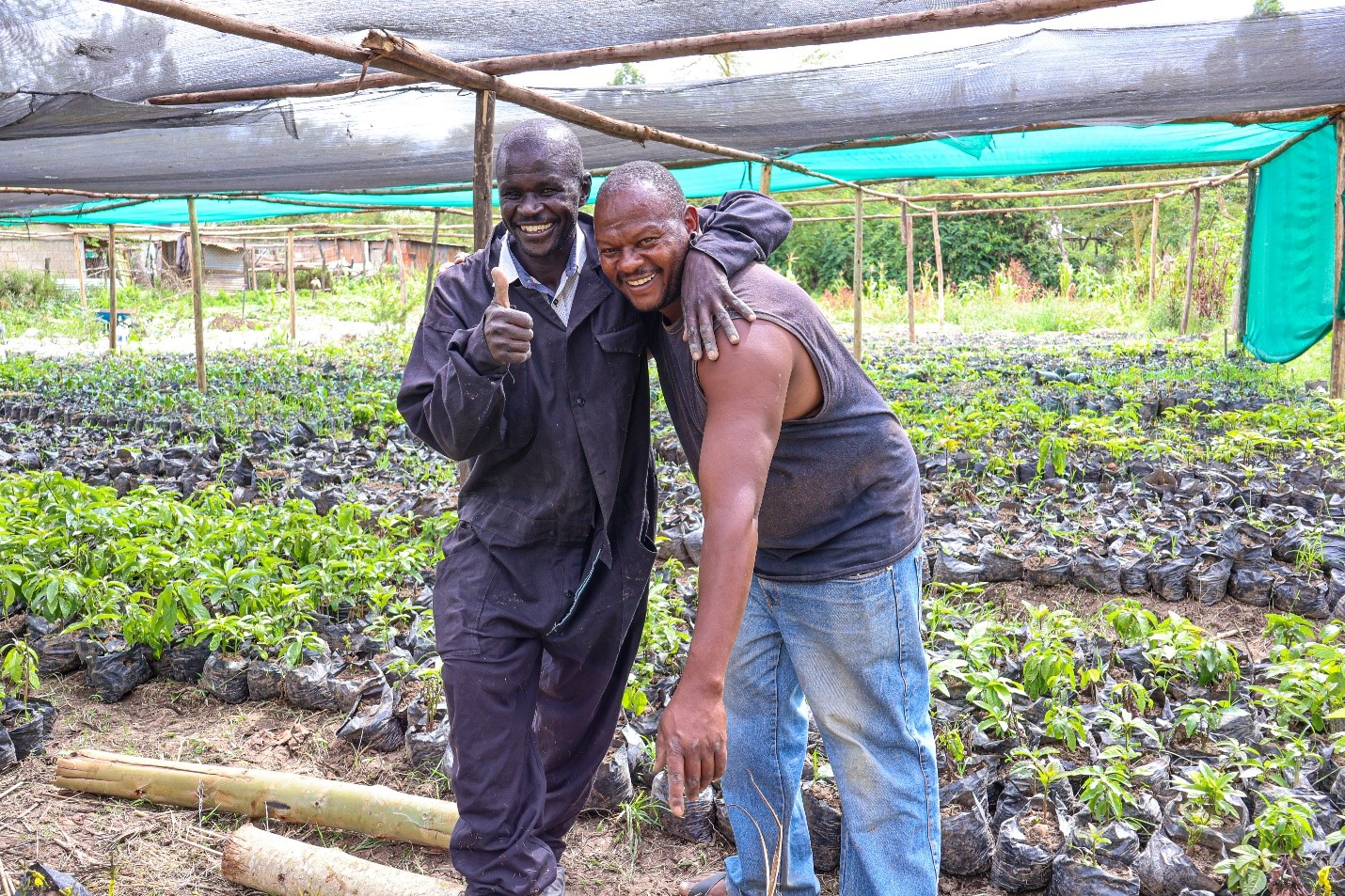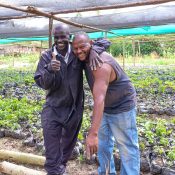
From an Unplanned Encounter to Landscape Restoration: Antony Kimonjino’s Journey
By Rose Kawira Nyaga, Multimedia Officer, Africa Harvest
“I was unemployed and an alcoholic,” confesses Antony Kimonjino. “But after joining the Restore Africa Programme and attending the trainings, I turned my life around. I now run my own tree nursery, my children are eating well, and they’re attending good schools.”
A 41-year-old father of four from Narok, Kenya, Kimonjino’s journey into tree seedling care began in the most unexpected of places—outside a bar.
One afternoon, while stepping out for some fresh air, Kimonjino bumped into Edwin Ngunjiri, a Project Officer at the Green Belt Movement. Ngunjiri was in the area scouting for tree nurseries to support under the Global EverGreening Alliance’s Restore Africa Programme.
“Are you from this neighbourhood?” Ngunjiri asked.
“Yes, yes… are you looking for someone?” Kimonjino replied.
That chance encounter quickly turned into a conversation, and before long, a guided tour. Hoping to earn a quick shilling, Kimonjino showed Ngunjiri around the nearby nurseries. But what stayed with him wasn’t just the walk—it was what he learned about Restore Africa. Ngunjiri explained how the programme works and the potential benefits for local farmers.
Kimonjino didn’t commit to join the programme upfront. They exchanged contacts, and he went on with his day. Yet the conversation lingered in his mind.
“Three days later, I gave him a call,” he recalls. “I told him I was interested.”
That single phone call marked the beginning of a new chapter. Ngunjiri, along with Joseph Santeto, Project Officer for Africa Harvest based in Narok County, began inviting him to programme trainings and community meetings.
The Restore Africa Programme uses a group-based approach, where farmers are recruited, trained, and supported collectively. With encouragement from Santeto, Kimonjino joined Olisigi Tree Nursery, an already established community group. Today, he serves as the group’s secretary and head of marketing.
Africa Harvest, one of the implementing partners of the Restore Africa Programme in Kenya, supports these groups by sourcing fruit tree seedlings from them—creating a steady income stream for members. After attending several trainings on tree species and nursery management, Kimonjino was inspired to start his own tree nursery. With equipment provided by the programme—including seedling potting bags, wheelbarrows, a solar water pump, and a water tank—he was able to get started.
“I was unemployed and an alcoholic,” he says again, reflecting. “But after joining the programme and attending the trainings, I turned my life around. I now run my own nursery, my children are eating well, and they’re going to good schools.”
But the programme is about more than just growing trees. Its livelihoods component, led by Africa Harvest, helps farmers earn an income while waiting for their trees to mature. The long-term aim is to sequester carbon and generate carbon credits—something Kimonjino now fully understands and supports. He appreciates the opportunity to make a living while contributing to environmental restoration.
He recalls one training that particularly stood out—on Good Agricultural Practices (GAPs) for beans. Organised by Africa Harvest, the session covered land preparation, pest control, record-keeping, and post-harvest handling. It opened his eyes to the potential of the “Nyota” bean variety.
“I didn’t know beans could earn me good money,” he says. “I’ve now planted the ‘Nyota’ variety on one and a half acres of land.”
“Kimonjino is one of the farmers we’re most proud of,” says Santeto. “He puts what he learns into practice—immediately.”
As Santeto speaks, Kimonjino appears momentarily lost in thought—perhaps reflecting on his days of heavy drinking and the surprising turn his life has taken. Who would have imagined that stepping out of a bar for a breath of fresh air would lead him on a journey of purpose, restoration, and community transformation?
The Restore Africa Programme aims to achieve sustained improvements in ecosystem restoration, livelihoods, and climate change resilience for 250,000 small-scale farmers and pastoralists, covering 250,000 hectares across Kwale, Kilifi, Elgeyo Marakwet, Migori, and Narok counties in Kenya by 2052.
In Narok County alone, the programme targets 24,641 households, aims to restore 61,421 hectares of land, and plant approximately 1.5 million trees.
Kimonjino’s story is just one thread in a much larger tapestry—but it powerfully shows how transformation can begin with a single conversation. With the right support, people can truly rewrite their stories—from despair to hope.



